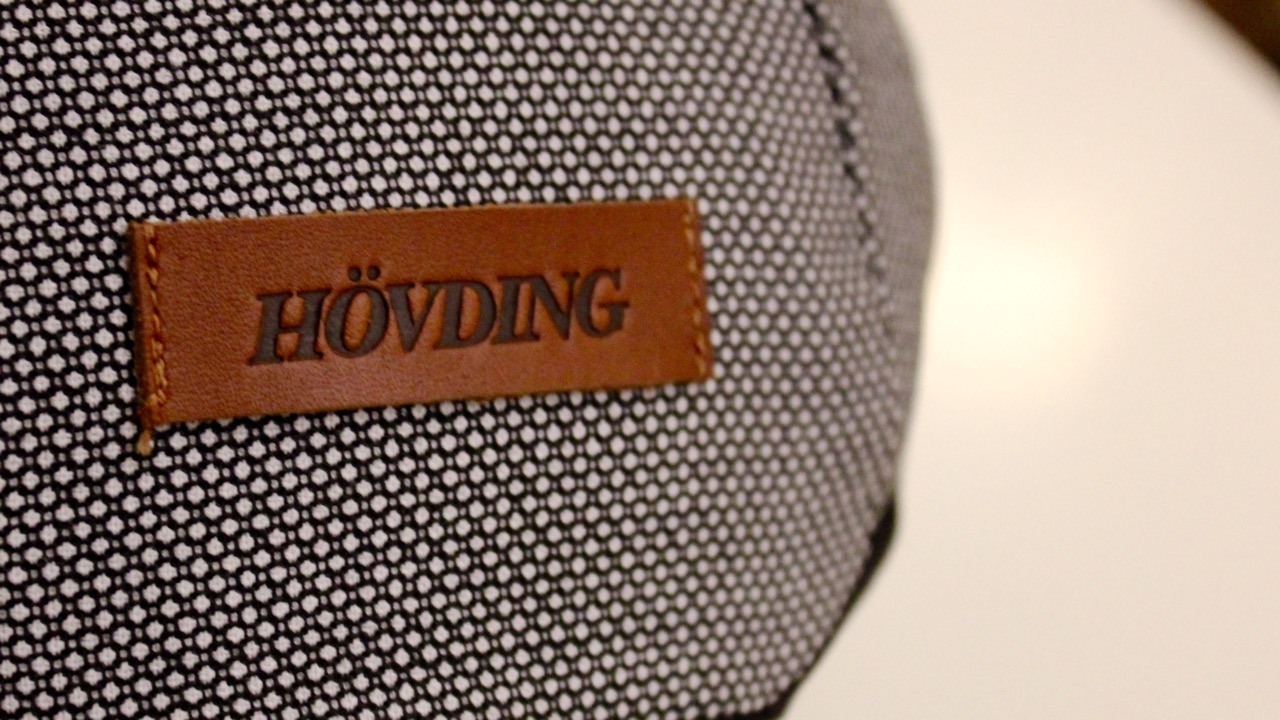
After eyeing it for about a year, I finally bought a Hövding. When its two Swedish designers first publicly announced it two years ago, it made headlines around the world. Safety and style. Of course it came from Scandinavia. The invisible helmet was hard to ignore. But at 499€, it was also hard to afford/acquire.
Now more mature and slightly more affordable at 299€, Hövding 2.0 is a compelling alternative to the bike helmet. But how is it day-to-day? How does it feel around the neck? Is it really effective? What happens if it deploys? Read on for a first-hand review after two weeks with Hövding. This is going to be quite detailed, so you might want to go get some tea or coffee. Ready? Let's go.
Back story: Hövding in Paris
Paris is far from being the most bike-friendly city but it honestly isn’t too bad. For over two years, I got around on the city's Vélib bikeshare cycles without ever really needing a helmet. The whole appeal of Vélib is that you don't have to come prepared; you just pick one up and go. It's done wonders putting more people on bikes in Paris.
I recently switched to a light singlespeed. I now zip around the city at 20km/h. In many ways, I feel safer and can take the entire lane without feeling guilty. But speed also demands quicker decision-making. Car drivers in Paris aren't too aware of bikes and often start moving or turn without signaling. Sometimes, they signal after starting to turn. If you ride often, you start being able to guess. Call it biker's intuition. If you think the driver might turn right at the next intersection but he hasn't signaled, you slow down even if you're on a bike lane, the light's green and you have right of way.
I've become quite good at this. But about three weeks ago I was on a narrow bike lane on Île de la Cité when a car slightly ahead to my left made a very sudden right turn without signaling or slowing down. There was no indication at all, not even a hint. I had to brake violently. I apologized to the rider behind me as the car sped away, leaving a trail of shaken bikers in its wake.
So. I still think I shouldn't need a helmet in Paris, but this little encounter could have ended much worse. I was going to get a helmet. But maybe I could go further. Maybe it was time to try that invisible helmet I'd been eyeing for over a year and test it in the real world.
How does Hövding work?
You wear Hövding around your neck, like you would a scarf. Right before you start riding, you zip up and button your Hövding to active it. It uses its interal gyroscope and accelerometer to continously read your movements at a rate of 200 inputs per second. If incoming data corresponds to anything in its internal database that represents a fall or an accident, it deploys in less than a tenth of a second. A portable cycling airbag.
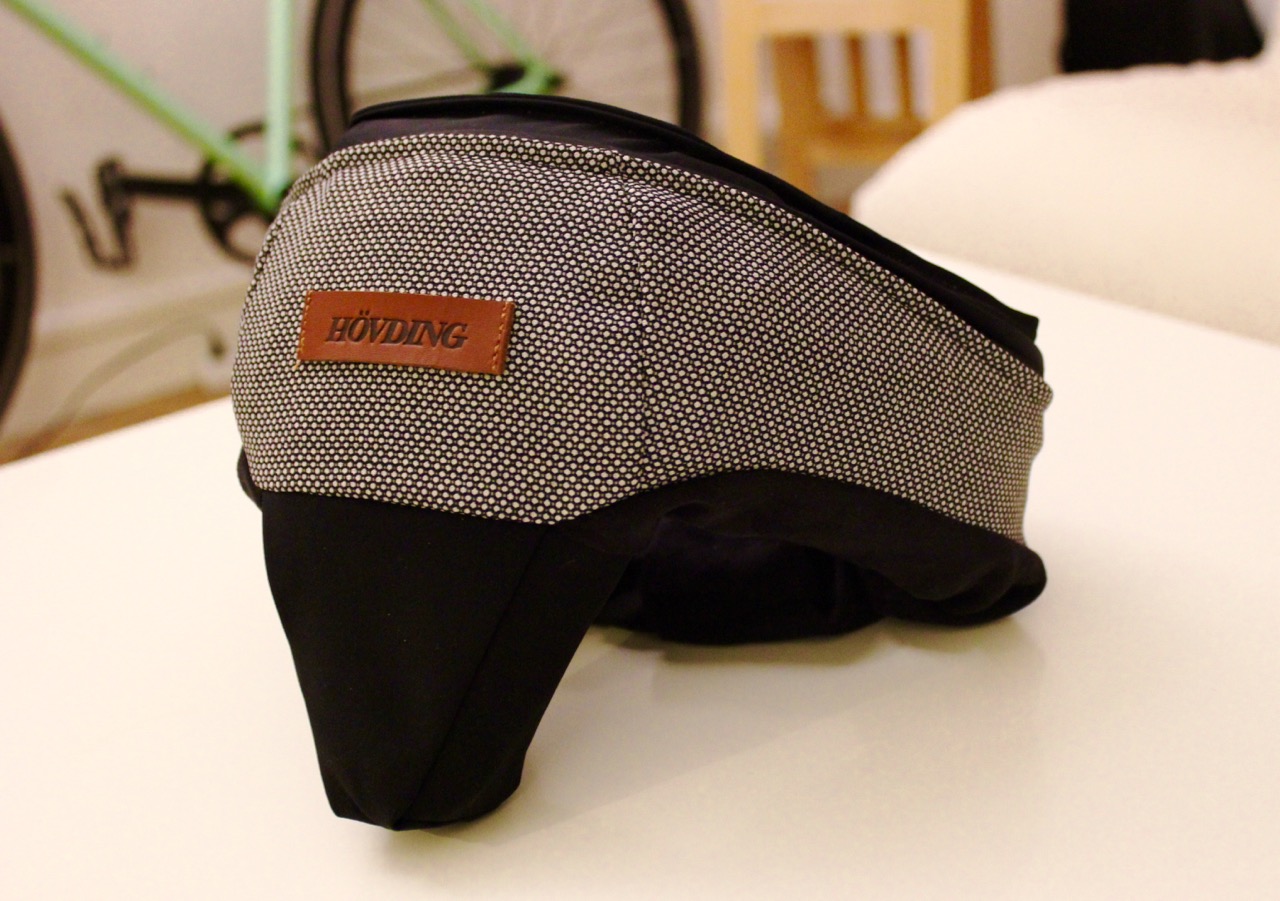
Ordering
I ordered on the official website. On top of the actual Hövding 2.0, you can also choose to get an additional customizable outer shell for 40€. This protective outer shell is washable and lets you change how your Hövding looks. I went for a Sarek Odyssey shell, but you can also skip it entirely; Hövding comes with a basic shell that'll do the job.
I received an order confirmation by email and I received Hövding after about 10 days. Oddly, I never got a shipping confirmation or a tracking code, which would have been nice. I sent an email to info@... after a few days and was told it would be shipping from Sweden that very day.
They also put me in touch with a local dealer in France. More on that later.
The Package
Hövding comes in a bright green cubical box. Inside: the actual airbag, the basic outer shell, my other shell, a user manual and a bright yellow micro USB charging cable.
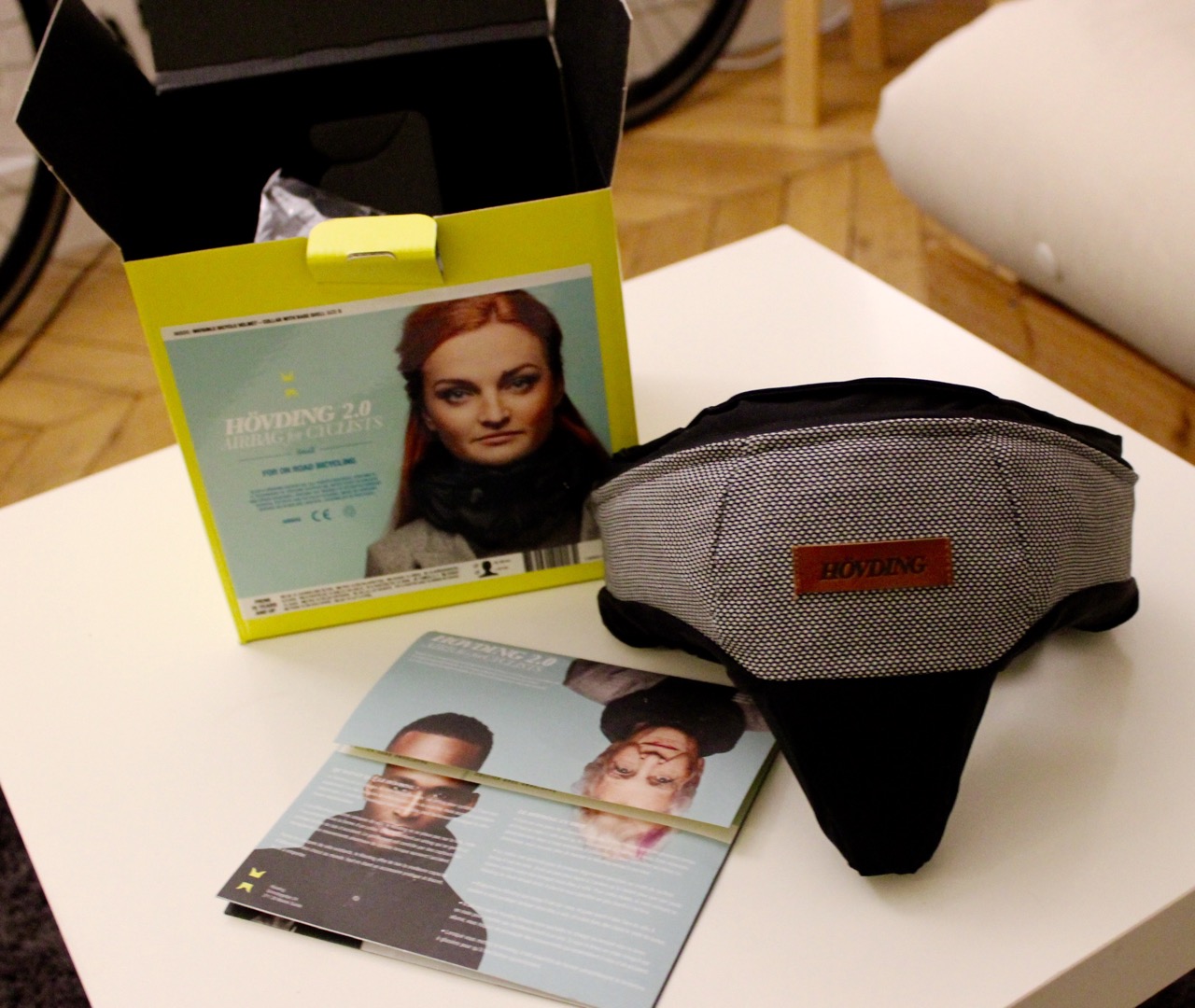
The material on Hövding is obviously of high-quality and it shows. Especially with optional shell, it's a very attractive accessory. Their marketing makes a point of presenting Hövding as a fashion product as well, with the kind of care and finesse you'd expect. You definitely won't mind being seen in it.
Around the Neck
Hövding comes in three sizes. Small and medium are generally for more or less the same head/neck sizes, so really it's a question of comfort. I went with small. It sits quite snug around my neck but isn't too tight at all. If anything it leaves some wiggle room.

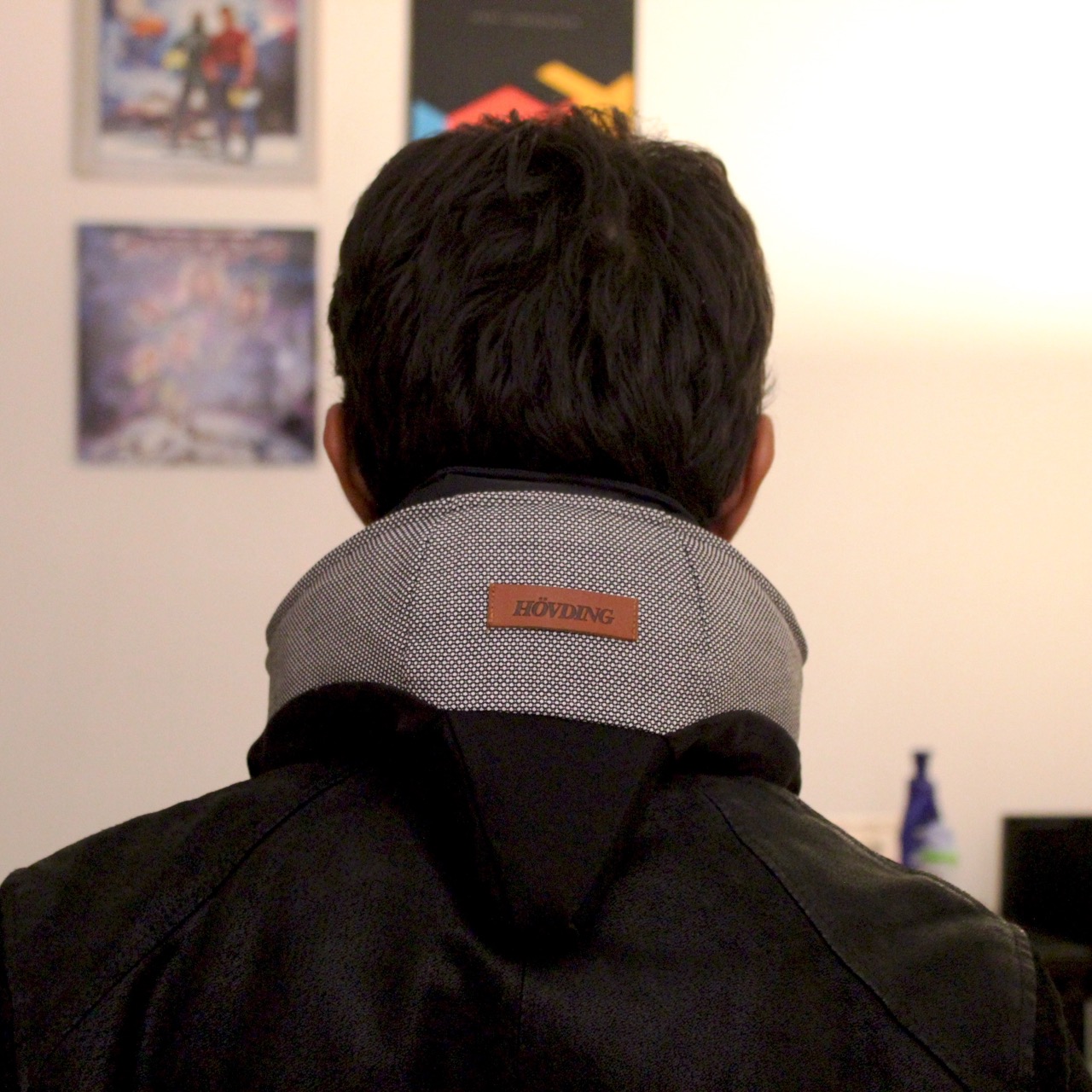

What surprised me was not its weight—it's actually quite light—but how the bit that holds the cold gas helium inflator sits on the back of my neck. You can definitely feel it there, and it isn't immediately very comfortable. If you ride an upright city bike, you won't notice it too much. On a road bike or a light singlespeed like mine where you're sitting quite low, it does restrict your movement a little bit.
The first few times I rode with Hövding, I didn't move my head around too much. I was just not used to having something behind my neck. I was also extra careful to avoid having this expensive device accidentally deploy when I turn my head. This fear is unfounded, of course; Hovding is much smarter than that. Now after over a week, I've grown used to it and feel it a lot less. I've started moving my head around normally too. This is of course essential. Luckily, once you get get the hang of it, Hövding does not restrict your head movement much. But give it a week. I imagine in another week it'll have become a habit and I won't even think about it.
Maintenance and Upkeep
Hövding can go nine hours on a full charge. For me, that's about a week - an hour to and back from work on weekdays and about three hours for rides on weekends. In real life that's a conservative estimate. I charged mine after 10 days and the battery was far from drained. The tiny cable goes in my bike bag and I charge it on my computer at work. Even if I somehow forget or lose the cable, someone around me is bound to have a standard micro USB cable handy.
There's a battery indicator with four bright green LEDs near the front. Loud beeps warn you when you're running low on battery and need to charge. This is important because a Hövding cannot protect you at all if it's out of charge.
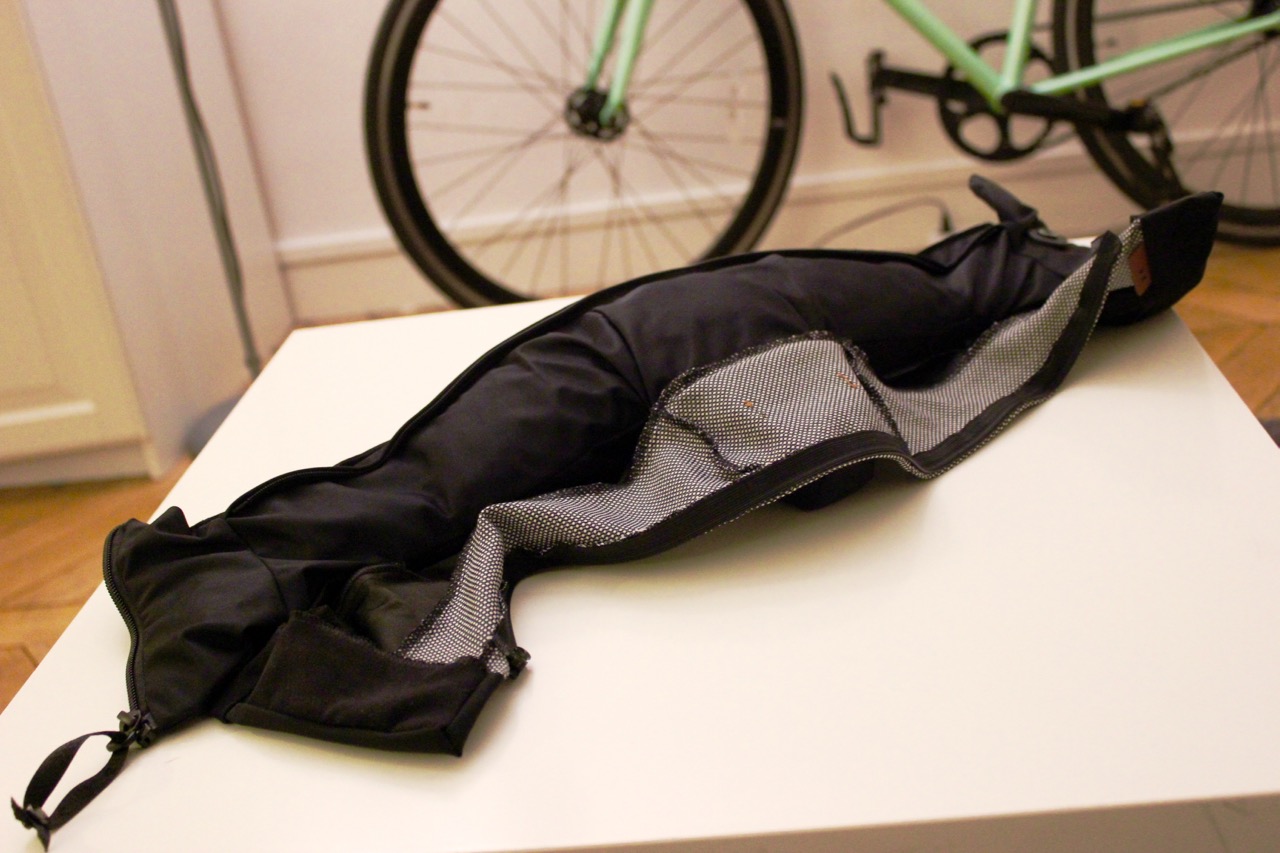
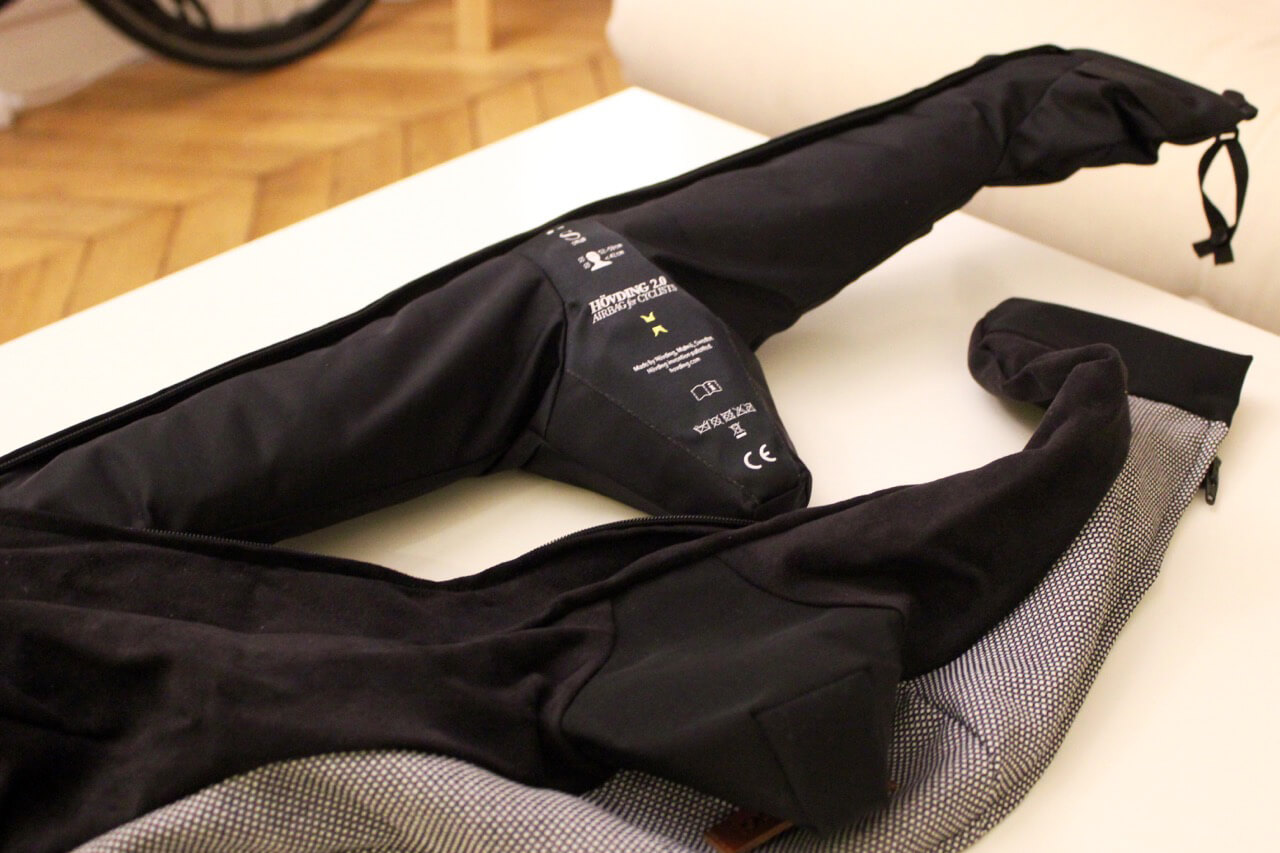
Hövding is water resistant. You don't want to go swimming with it, but I've already been out in the rain with it (about 15 minutes of steady drizzle) and it wasn't a problem. The outer shell is also washable if you manage to get dirt on it (or red wine, somehow).
Safety and Effectiveness
How effective is Hövding, really? That's the first question anyone will ask, and rightly so. Thankfully, we now have lots of real-world data and and independent tests. The results are very encouraging to say the least.
All helmets sold in Europe meet CEN European standards, although some are much more effective than others. The subject of bike helmet testing is controversial; often, they're only tested for perpendicular impact, very unlikely in real-life situations. Folksam, a Swedish insurance company that tests bike helmets every year, recently expanded its methodologies to account for oblique impacts and angular acceleration, which are primarily responsible for brain injury. It concluded:
"the Hövding 2.0 head protector, which protects the head with an airbag in the event of an accident, showed the overall best result."
Hovding 2.0 performed considerably better overall:
The Hövding 2.0 helmet performed almost three times better than all the other conventional helmets (48 g vs. other helmets that were around 175 g). The most important is that this helmet also reduced the rotational energy to the head better than conventional helmets.
You can read the Folksam 2015 Bike Helmet Test report in English or in Swedish.
The creators of Hövding themselves have posted videos of simulated accidents using both dummies and professional stunt-actors in real-life conditions.
They recently also produced a series of clever videos called Will it Pop?, complete with retro 8-bit music and pixel art. They're basically a dude in bright yellow overalls testing Hövding in a number of different situations: taking a curb, going shopping, playing tennis, high diving. They're all really fun.
Hövding tested the device and their algorithm for years before bringing the product to market, so false positives are exceedingly rare. As far as I'm ware, not a single case of failure has so far been reported. Sudden stops or harmless slips have a different signature to actual falls that are likely to cause head injury. Hövding can distinguish between them and many other situations. So chances are overwhelmingly that it'll deploy if you need it. The official manual reassuringly mentions that Hövding is programmed to err on the side of safety and deploy even in situations it's probably not needed.
Insurance, or what if it deploys?
So your Hövding deployed. It was most likely a real accident and it protected your head or it was a silly fall that really wasn't that bad but Hövding didn't want to take the risk. What happens now?
Hövding like all airbags can only be used once. If it does deploy, the company requests that you send it back to them. The internal black box records the last 10 seconds of data, which can be useful to improve the product. In return, you can get a replacement Hövding at a discount (for 199€ instead of 299€, it seems).
In Scandinavian countries, your insurance will mostly likely reimburse the cost of your replacement. In France, we might soon have something similar.
When I ordered my Hövding, they put me in touch with the marketing director of TOAD, a Quimper-based company that imports Hövding and supplies authorized resellers in France. He tells me that they're currently talking to French insurance companies about insuring Hövding. I don't have the details yet but it'll probably be a specific plan at affordable rates. If your Hövding deploys, the insurance company would then pay for the replacement. We should have the details very soon.
Shaking Things Up
I've so far been very happy with my Hövding. Of course, it's the sort of thing you hope you'll never need. But as long as you get into the habit of put it around your neck and activating it before riding, you don't have to think about it too much.
It will take a while for this technology to be widely adopted. The price will surely drop with time and that should help. Professional bikers are understandably suspicious of it; I'm sure that too will change. Many still see Hövding as nothing more than a fashion accessory, which is partly a result of their own marketing. In time though, I think Hövding will manage to shake things up a little and be taken more seriously.
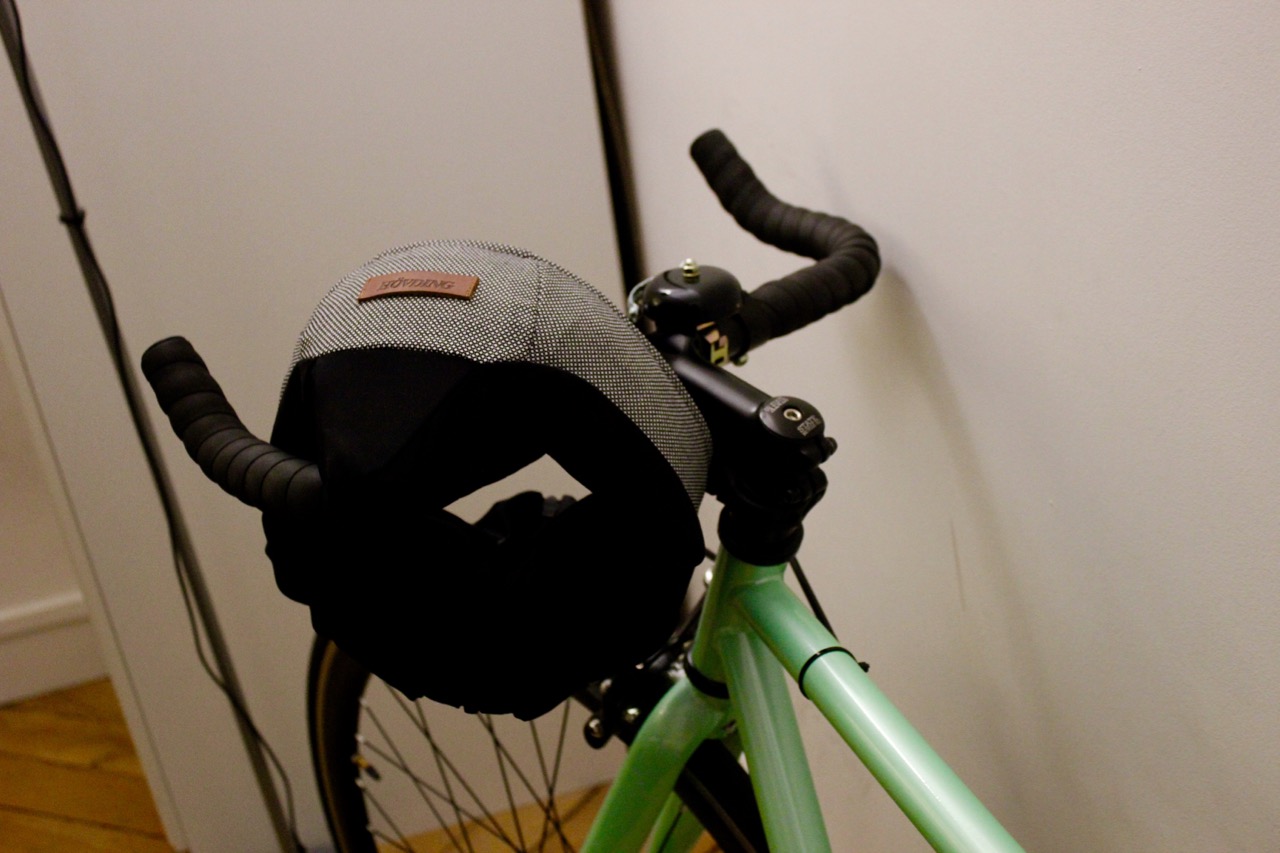
If Hövding can make safety more stylish and convince more people who are on the fence about getting a helmet to ride safer, that's excellent. But it's shouldn't put the focus away from road safety in general and the real source of the problem in our cities today: the dominance of cars. There are even studies that suggest that wearing a (regular) helmet makes cars less careful around bicycles. For now, until our cities become more bike-friendly, Hövding might be an excellent balance between riding safe and looking good.
Hövding is worth being excited about.